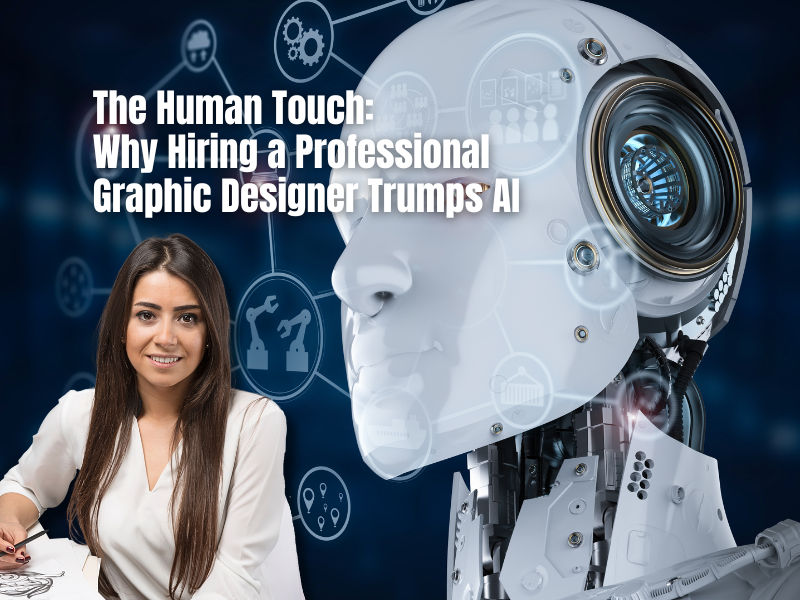In today’s digitally driven world, artificial intelligence (AI) has revolutionized numerous industries, transforming the way we work and live. However, when it comes to graphic design, relying solely on AI can be a mistake. While AI-powered design tools offer convenience and speed, they lack the creative nuance, emotional intelligence, and strategic thinking that a professional graphic designer brings to the table.
Limitations of AI in Graphic Design
AI design tools excel at repetitive, formulaic tasks, such as generating social media graphics or producing basic logos. However, they struggle with complex design projects requiring:
Originality: AI algorithms rely on existing design patterns, making it challenging to create innovative, groundbreaking designs.
Contextual Understanding: AI lacks human intuition, struggling to grasp subtle design nuances, brand identity and target audience needs.
Customization: AI design tools often produce generic outputs, failing to cater to unique business requirements.
Emotional Connection: AI-designed visuals may lack emotional resonance, neglecting the critical role design plays in evoking feelings and connections.
The Value of Professional Graphic Designers
Hiring a professional graphic designer offers numerous benefits:
Creative Vision: Skilled designers bring unique perspectives, expertise, and imagination to craft captivating visual stories.
Strategic Thinking: Designers consider business objectives, target audiences, and brand strategy to create effective designs.
Customized Solutions: Designers tailor designs to specific business needs, ensuring consistency and brand integrity.
Emotional Intelligence: Designers understand how design influences emotions and behaviors, fostering meaningful connections.
Time Efficiency: Collaborating with designers saves time in the long run, as they handle design complexities and revisions.
Brand Authenticity: Professional designers ensure designs align with brand values, voice and vision.
Key Areas Where Professional Graphic Designers Excel
Logo Design: A well-crafted logo requires creativity, strategy and attention to detail, making it difficult for AI to replicate.
Branding and Identity: Designers develop comprehensive brand guidelines, ensuring consistency across platforms.
Print Design: Professional designers optimize print materials (brochures, business cards) for visual impact and functionality.
Web Design: Skilled designers balance aesthetics, user experience and functionality for engaging websites.
Packaging Design: Designers create visually appealing, functional packaging that resonates with target audiences.
When to Choose AI Design Tools
While professional graphic designers offer unparalleled value, AI design tools are suitable for:
Basic Designs: Social media graphics, email templates and simple logos.
Design Prototyping: AI tools facilitate rapid prototyping and idea exploration.
Design Automation: AI streamlines repetitive design tasks, freeing designers for strategic work.
Collaborating with AI: The ideal approach combines human creativity with AI efficiency.
AI-Assisted Design: Designers leverage AI tools for mundane tasks, focusing on high-level creative decisions.
Hybrid Design Teams: Humans and AI collaborate, ensuring balanced perspectives.
Continuous Learning: Designers develop AI skills, staying adaptable in an evolving design landscape.
In graphic design, hiring a professional designer is crucial for capturing the essence of your brand, evoking emotions, and driving business success. While AI design tools have their place, they cannot replace human expertise, creativity, and strategic thinking. Businesses can harness the power of effective design solutions by understanding the strengths and limitations of both AI and professional designers.

